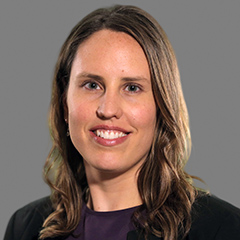For many people with physical, cognitive, mental, or other disabilities or conditions who need help with daily activities, Medicaid-funded long-term services and supports (LTSS) provide critical benefits. Medicaid is the largest payer of LTSS in the United States, and demand for LTSS is expected to grow as the population of the United States gets older. By 2035, for the first time in the country’s history, adults older than age 65 will outnumber children younger than 18. The Centers for Medicare & Medicaid Services (CMS), which is at the forefront of LTSS system delivery, has been seeking new ways to provide more comprehensive and action-oriented data analyses. In partnership with CMS, Mathematica is working to improve these analyses to help inform the delivery of accessible and high-quality care.
CMS has several initiatives focused on transformation and quality improvement that aim to help states focus on rebalancing their Medicaid LTSS systems away from institutional care in favor of home and community-based services (HCBS). Efforts to accelerate this rebalancing have included a number of legislative and policy changes in recent decades, including Section 9817 of the American Rescue Plan Act of 2021, which provides additional funding for HCBS.
Mathematica partners with CMS to support these goals. For several years, we have analyzed different data sources and published reports to help states and other stakeholders understand progress toward rebalancing, both on the national and state levels. Two new reports show that the percentage of HCBS expenditures out of total Medicaid LTSS expenditures nationwide—a key measure of states’ progress toward increasing HCBS delivery—surpassed the long-standing benchmark of 50 percent of LTSS expenditures in fiscal year 2013 and has remained higher than 50 percent since, reaching 62.5 percent in fiscal year 2020. Spending on HCBS was at an all-time high in fiscal year 2020 and represented a 3.9 percentage point increase over fiscal year 2019, and the largest proportion of HCBS spending was through section 1915(c) waiver programs.
Although these previous reports provided key data to track how states deliver Medicaid LTSS, they have been limited by the underlying data sources and did not allow us to understand the number or characteristics of the people served. Examining Medicaid LTSS expenditures is important, but it is critical to understand more about the people receiving these services to truly improve LTSS delivery and focus on person-centered care.
To help address limitations in the historical reports, Mathematica and CMS are now using new data sources and improving the methods and format of the reports to make the findings on Medicaid LTSS more complete and accessible to the various stakeholders who use them to track progress in rebalancing.
As we highlighted recently in our presentation at the 2023 HCBS Conference, the changes to our analyses will enable us to produce more detailed output on the characteristics of people receiving Medicaid LTSS, which is a key step in helping CMS understand and address equity issues and work with states to continue to make strides in delivering high-quality HCBS. The changes we made to our analytics and reporting will also help CMS continue to expand its work in other areas through greater transparency and more data-driven decision making.
Demand for LTSS will continue to rise. The new data sources and methods are an important step in ensuring all beneficiaries who use Medicaid LTSS receive the best care possible. Mathematica is committed to helping CMS find the most effective ways to achieve this goal.




